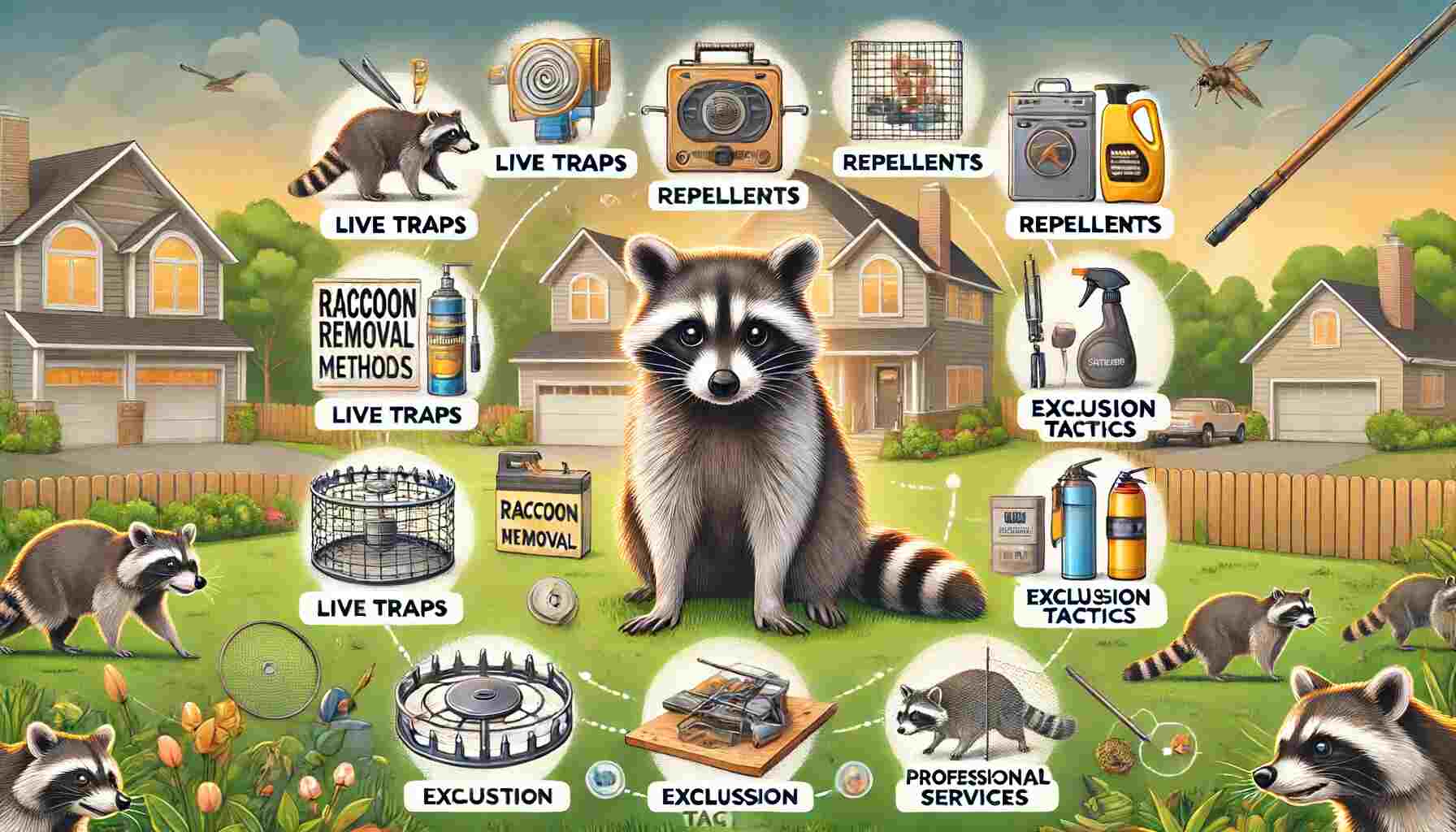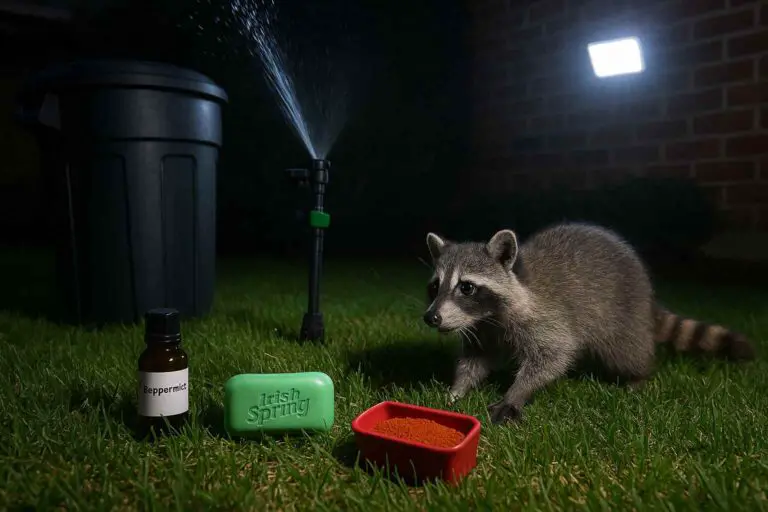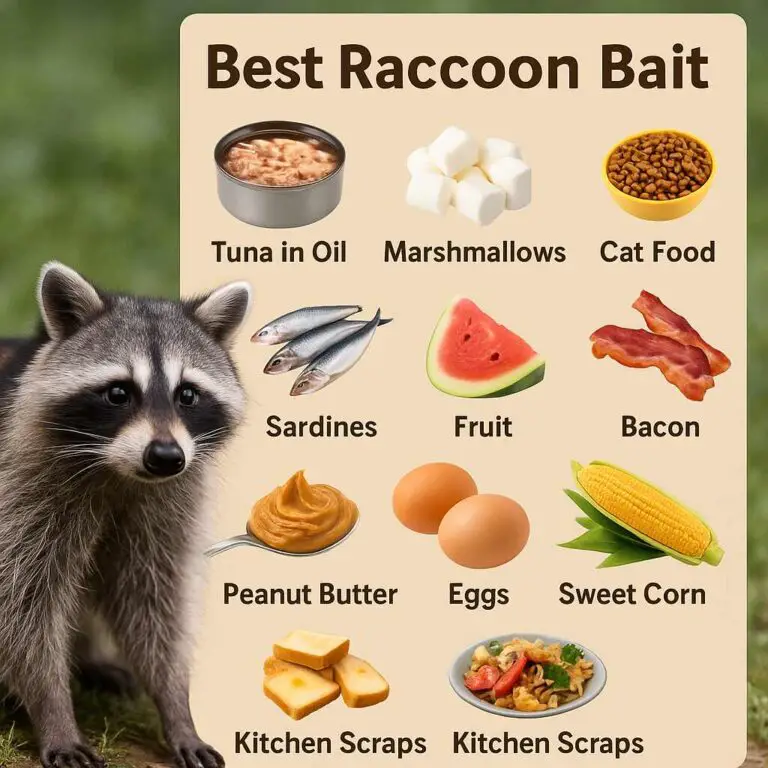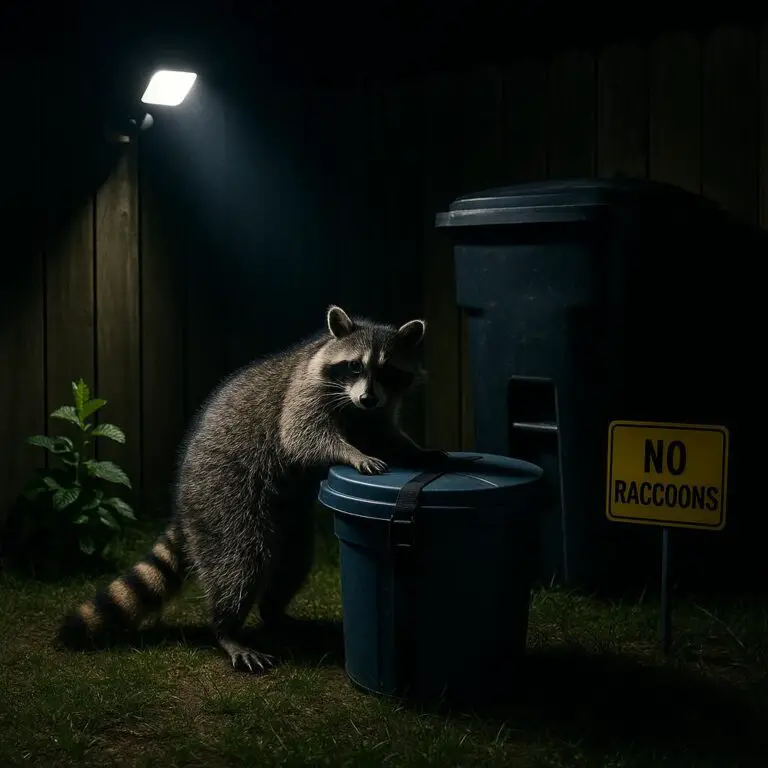Raccoons, while cute and clever, can be a nuisance when they invade your property. They can cause significant damage, pose health risks, and generally disrupt the peace of your home or garden. This comprehensive guide will explore the top 10 raccoon removal methods, detailing their pros and cons, effectiveness, safety, cost, and accessibility.
1. Live Traps
Detailed Explanation
Live traps are a humane method for removing raccoons from your property. These traps typically consist of a metal cage with a spring-loaded door. When the raccoon enters the trap to reach bait placed inside, it triggers the door to close behind it, capturing the animal without causing harm.
Effectiveness and Safety
Live traps are highly effective when used correctly. They ensure the raccoon is captured alive, allowing for relocation far from your property. However, they require regular monitoring to ensure trapped animals are not left without food or water.
Pros
- Humane method
- Effective if monitored regularly
- Allows for relocation
Cons
- Requires frequent monitoring
- Legal restrictions in some areas
- Potential for injury to both the animal and the handler
Cost and Accessibility
Live traps are readily available at most hardware and outdoor stores, as well as online retailers like Amazon. Prices range from $20 to $100, depending on the size and quality of the trap.
2. Repellents
Detailed Explanation
Repellents work by using strong odors or tastes that raccoons find unpleasant. These can be in the form of granules, sprays, or electronic devices that emit ultrasonic sounds.
Effectiveness and Safety
Repellents can be somewhat effective, especially as a first line of defense. However, their effectiveness can vary greatly, and raccoons may become accustomed to them over time. Most repellents are safe for humans and pets when used as directed.
Pros
- Easy to apply
- Non-lethal
- Safe for humans and pets
Cons
- Variable effectiveness
- Needs regular reapplication
- Can be expensive over time
Cost and Accessibility
Repellents are widely available and typically cost between $10 and $50 per product. Electronic repellents may be more expensive but offer a longer-lasting solution.
Ultrasonic Raccoon Repellent on Amazon
3. Exclusion Methods
Detailed Explanation
Exclusion involves sealing off entry points to prevent raccoons from accessing your home or property. This can include securing trash cans, repairing holes in roofs or walls, and installing raccoon-proof fencing.
Effectiveness and Safety
Exclusion is highly effective if done thoroughly. It is a safe method as it focuses on prevention rather than removal.
Pros
- Highly effective
- Long-term solution
- Safe and humane
Cons
- Can be labor-intensive
- Requires thorough inspection and maintenance
- Initial cost can be high
Cost and Accessibility
The cost of exclusion methods varies widely, depending on the extent of the measures needed. Simple solutions like securing trash cans are inexpensive, while installing fencing or repairing structures can be more costly.
Animal Proof Trash Can Lids on Amazon
4. Professional Wildlife Removal Services
Detailed Explanation
Hiring a professional wildlife removal service is a comprehensive solution. These professionals use a variety of methods, including live trapping, exclusion, and repellents, to ensure raccoons are removed and do not return.
Effectiveness and Safety
Professional services are highly effective and ensure the safety of both the raccoons and homeowners. They are knowledgeable about local laws and regulations regarding wildlife removal.
Pros
- Highly effective
- Safe for both humans and animals
- Knowledgeable about legal restrictions
Cons
- Can be expensive
- Requires scheduling and availability
- Relies on the expertise of the service provider
Cost and Accessibility
The cost of professional services varies depending on the extent of the problem and the company hired. Prices can range from $100 to $500 or more.
5. Motion-Activated Sprinklers
Detailed Explanation
Motion-activated sprinklers detect movement and spray water to scare away raccoons. They are an environmentally friendly and humane way to deter raccoons from gardens and yards.
Effectiveness and Safety
These sprinklers are effective for outdoor areas and can condition raccoons to avoid your property. They are safe for humans and animals, causing only a brief startle.
Pros
- Humane and non-lethal
- Environmentally friendly
- Effective for gardens and yards
Cons
- Limited to outdoor use
- May require multiple units for larger areas
- Can be triggered by any movement, including pets
Cost and Accessibility
Motion-activated sprinklers are available at garden centers and online retailers, with prices ranging from $30 to $70.
Motion-Activated Sprinkler on Amazon
6. Ammonia Soaked Rags
Detailed Explanation
Ammonia-soaked rags emit a strong smell that raccoons find unpleasant. Placing these rags in areas where raccoons frequent can deter them from entering.
Effectiveness and Safety
This method can be effective in enclosed spaces like attics or sheds. However, ammonia is a chemical that can be harmful if inhaled in large quantities, so it must be used with caution.
Pros
- Inexpensive
- Easy to apply
- Effective in enclosed spaces
Cons
- Potential health risks if inhaled
- Needs regular reapplication
- Limited to small, enclosed areas
Cost and Accessibility
Ammonia is inexpensive and available at most grocery stores. A bottle typically costs around $2 to $5.
7. One-Way Doors
Detailed Explanation
One-way doors allow raccoons to exit a space but not re-enter. These are often used in conjunction with exclusion methods to ensure raccoons leave attics, sheds, or other enclosed areas.
Effectiveness and Safety
One-way doors are effective when installed correctly and combined with sealing entry points. They are a humane option as they do not harm the raccoon.
Pros
- Humane and non-lethal
- Effective when used with exclusion methods
- Allows raccoons to leave on their own
Cons
- Requires proper installation
- Needs to be used with other exclusion methods
- Initial cost can be high
Cost and Accessibility
One-way doors can be purchased online or at specialty wildlife control stores. Prices range from $20 to $50.
8. Predator Urine
Detailed Explanation
Predator urine, such as coyote or fox urine, can be used to create the impression that a predator is nearby, deterring raccoons from entering the area.
Effectiveness and Safety
Predator urine can be effective in deterring raccoons, but its effectiveness can diminish over time as the scent fades. It is safe for humans and pets when used as directed.
Pros
- Natural and humane
- Can be effective in deterring raccoons
- Safe for humans and pets
Cons
- Needs regular reapplication
- Effectiveness can vary
- Can be unpleasant to handle
Cost and Accessibility
Predator urine is available at garden centers and online retailers, with prices ranging from $10 to $30 per bottle.
9. Bright Lights and Loud Noises
Detailed Explanation
Raccoons are nocturnal and prefer dark, quiet areas. Using bright lights and loud noises can make an area less attractive to them.
Effectiveness and Safety
This method can be effective but may not be practical for all situations. It is safe for both humans and animals but can be disruptive.
Pros
- Non-lethal and humane
- Can be effective in deterring raccoons
- Safe for humans and animals
Cons
- Can be disruptive
- Limited effectiveness in some situations
- Requires continuous use
Cost and Accessibility
Bright lights and noise-making devices are widely available, with prices varying depending on the product. Basic solutions can cost as little as $10.
Motion-Activated Lights on Amazon
10. Home Remedies
Detailed Explanation
Various home remedies, such as using vinegar, hot pepper spray, or placing mothballs, can be used to deter raccoons. These methods rely on strong smells or tastes that raccoons dislike.
Effectiveness and Safety
Home remedies can be hit or miss in terms of effectiveness. Some may work temporarily, but raccoons can become accustomed to them. Safety varies depending on the ingredients used.
Pros
- Inexpensive
- Easy to apply
- Uses readily available materials
Cons
- Variable effectiveness
- Needs regular reapplication
- Some remedies can be harmful if not used properly
Cost and Accessibility
Home remedies are usually inexpensive, as they use common household items. Costs can range from a few dollars to around $20, depending on the materials used.
Conclusion
When dealing with raccoons, it’s essential to choose a method that suits your specific situation, considering factors like effectiveness, safety, cost, and accessibility. While some methods, like professional services or live traps, offer comprehensive solutions, others, like home remedies or repellents, provide more accessible but potentially less reliable results. Combining multiple methods often yields the best results, ensuring that raccoons are removed and deterred from returning.
Remember to check local regulations and guidelines when dealing with wildlife and prioritize humane and safe practices. Whether you’re securing your home with exclusion methods, scaring them away with bright lights and noises, or opting for professional removal services, this guide provides a thorough overview to help you make an informed decision.








